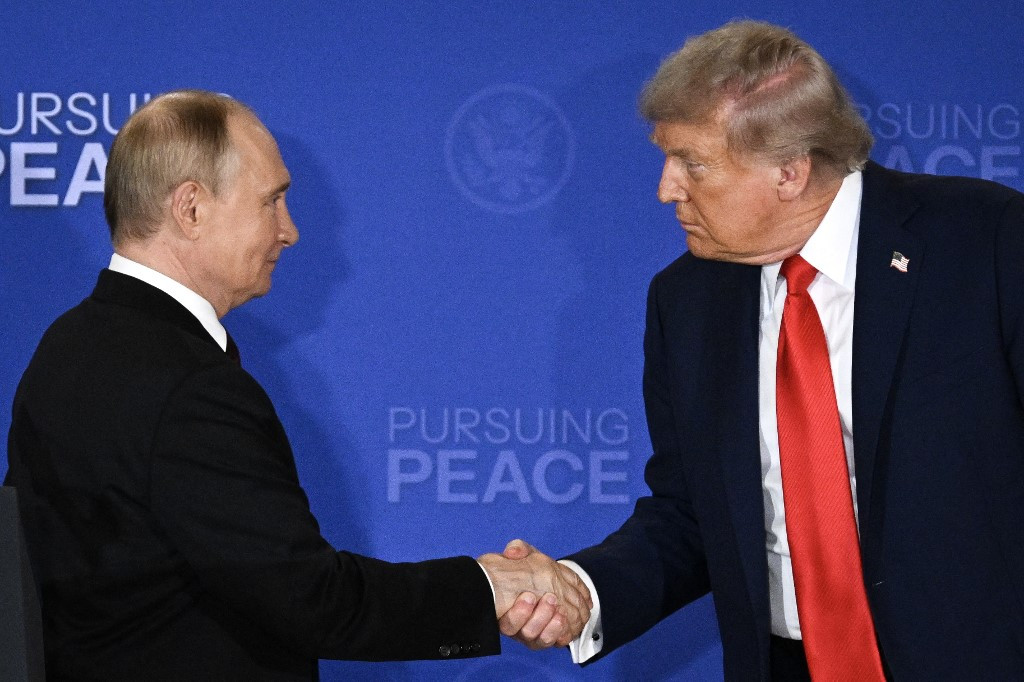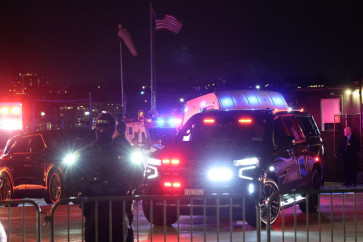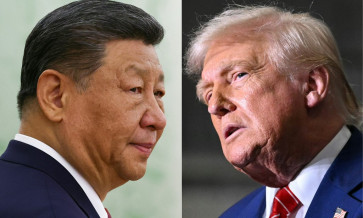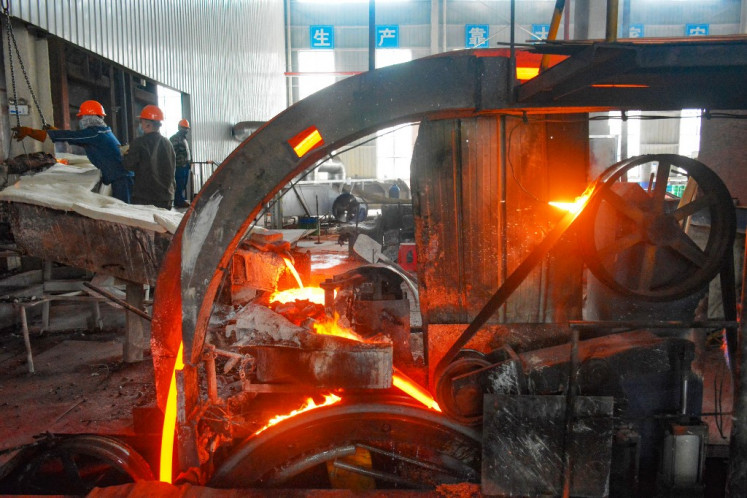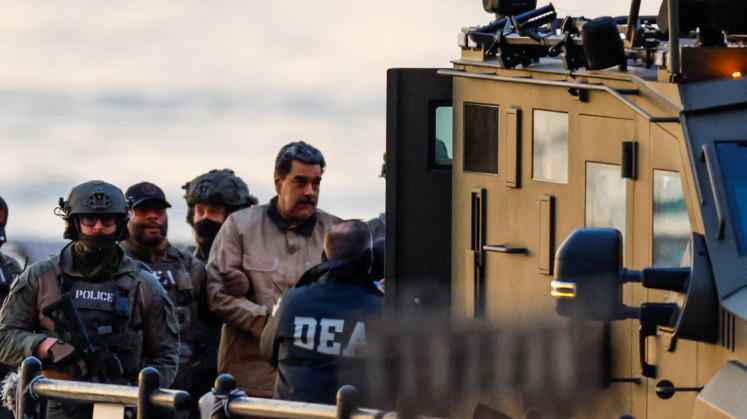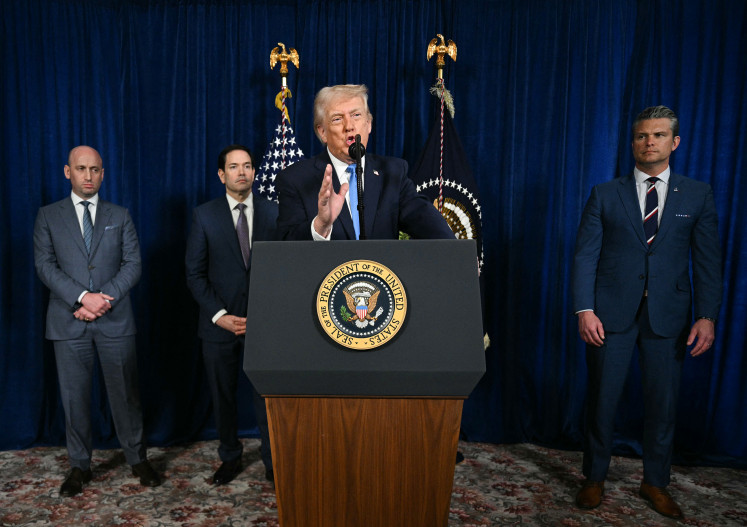Popular Reads
Top Results
Can't find what you're looking for?
View all search resultsPopular Reads
Top Results
Can't find what you're looking for?
View all search resultsTrump-Putin summit: Why ASEAN cannot afford to be a spectator
The Trump-Putin spectacle last Friday should serve as a cautionary tale for ASEAN, encouraging it to stay the course in its unique brand of diplomacy, one that is based on substance, not optics, as it navigates great power theatrics and affirms its place on the global stage.
Change text size
Gift Premium Articles
to Anyone
W
hen United States President Donald Trump rated his joint press conference with Russian President Vladimir Putin a "10 out of 10" and declared that "great progress" had been made because they "got along so well", the world's attention was captivated by the spectacle.
Yet beneath the red carpet, warm handshake and flyovers of B-2 bombers and F-35 jets lays an uncomfortable truth: There was no actual deal, only vague optimism.
For ASEAN, this meeting is more than a distant drama. It carries immediate consequences. The way the world’s two biggest nuclear powers conduct themselves in negotiations, whether flippant or firm, shapes the environment in which Southeast Asia must navigate its own diplomacy, trade and security dilemmas.
Trump’s claim of “great progress”, coupled with his concession that “there’s no deal until there’s a deal”, exposed the fragility of the supposed breakthrough. This was diplomacy by spectacle, where optics took precedence over substance.
For ASEAN, this raises uncomfortable questions about whether great power diplomacy can be trusted to deliver real peace when it is performed as television theater. It also questions whether regional organizations can still play a meaningful role when superpowers dominate the stage with symbolism but leave conflicts unresolved.
ASEAN’s credibility has always rested on its patient, consensus-driven approach. But when the US treats international agreements as little more than expressions of personal rapport and Russia leverages optics to project parity with Washington, ASEAN risks being overshadowed.
Trump’s suggestion that he would “back off Russian sanctions for now” might seem distant to Jakarta, Bangkok or Manila, but its ripple effects reach ASEAN shores. Sanctions are not just political signals: They shape global markets, commodity prices and investor confidence. If Washington signals inconsistency, tightening sanctions one day and relaxing them the next, ASEAN economies, heavily dependent on global trade flows, will feel the shock.
Russia has also become more visible in Southeast Asia, from arms sales to Vietnam and Myanmar to energy cooperation with Indonesia and the Philippines. If US-Russia relations continue to oscillate unpredictably, ASEAN states will be forced into delicate balancing acts. Too much engagement with Moscow risks American displeasure; too much alignment with Washington risks alienating a Russia that is steadily regaining influence.
The Trump-Putin performance contrasts sharply with ASEAN’s painstaking diplomacy. For example, during the Thai-Cambodian border conflict, ASEAN mediation, backed by Malaysia’s chairmanship, produced a ceasefire within days; or consider ASEAN’s continuing search for a framework to manage tensions in the South China Sea despite competing national interests.
These processes are far from perfect, but they rest on the recognition that durable agreements require structure, monitoring and a collective buy-in. They are not sealed with a handshake or a “10 out of 10” rating.
Trump’s flippancy highlights why the Southeast Asian grouping must continue to emphasize institutional mechanisms, whether through the ASEAN Regional Forum (ARF), the East Asia Summit (EAS) or the ASEAN Defense Ministers’ Meeting Plus (ADMM-Plus). If global powers are content with symbolism, ASEAN must anchor itself in substance.
The US president’s red-carpet welcome and flyover of strategic bombers and stealth fighters made for compelling images, but ASEAN should interpret them with caution.
Symbolism does not equal security. For smaller states in Southeast Asia, stability is not measured in military flyovers but in the absence of escalation, the availability of trade routes and the predictability of great power behavior.
If Washington uses military theatrics as diplomatic props while leaving ceasefires unresolved, ASEAN risks inheriting a world of heightened tensions but weakened institutions. Worse, Southeast Asia may be forced into greater militarization, an arms race it can ill afford, simply to hedge against uncertainty.
The Trump-Putin encounter underscores the importance of ASEAN defending its own model of diplomacy. Centrality cannot remain an abstract slogan. If superpowers conduct negotiations as spectacles, ASEAN must ensure its platforms remain venues where security issues are discussed with seriousness. The EAS and the ARF cannot be reduced to talking shop; they must continue proving that substance is possible when others offer only optics.
Equally vital is ASEAN’s ability to avoid the trap of great power rivalries. With US-Russia relations swinging unpredictably, Southeast Asia cannot afford to become a pawn in their game. Neutrality, nonalignment and convening power must remain the backbone of the ASEAN strategy. But neutrality requires unity, and that unity remains fragile. Without it, the regional bloc risks being picked apart by external actors that exploit divisions.
The economic dimension is no less urgent. Sudden shifts in sanctions regimes affect energy, commodities and financial markets. ASEAN must deepen its economic resilience by diversifying trade partners, strengthening intra-regional trade and creating buffers against volatility triggered by the maneuvering of larger powers.
Equally, ASEAN must highlight the humanitarian dimensions of security. While Washington and Moscow often showcase military might, ASEAN has built credibility through disaster relief cooperation, humanitarian assistance and confidence-building measures. These should be emphasized as the true markers of regional security, contrasting starkly with the hollow theatrics of military flyovers.
Southeast Asia cannot afford to abandon patient diplomacy for quick theatrics. Unlike superpowers, ASEAN does not have the luxury of walking away from the consequences of escalation. Its very survival depends on getting the details right, such as ceasefire monitoring, maritime cooperation and trade facilitation, not simply projecting camaraderie on a global stage.
Trump may rate his meeting with Putin “10 out of 10”, but the score looks different for ASEAN. The meeting produced no ceasefire, no framework for implementation and no clarity on sanctions. What it did produce was a reminder: Great power theatrics can destabilize smaller regions when spectacle substitutes substance.
ASEAN should therefore treat this as a cautionary tale. Stability in Southeast Asia will not be secured by watching Washington and Moscow trade gestures. It will be secured by ASEAN doubling down on its own model of quiet diplomacy and collective agreements, as well as an insistence that regional issues cannot be hijacked by the whims of individual leaders.
In a world where great powers are increasingly consumed by spectacle, ASEAN has an opportunity to remind the international community of the value of substance. That is how Southeast Asia can safeguard its future: not as a passive spectator of US-Russia theatrics, but as a proactive shaper of regional stability.
***
The writer is a professor of ASEAN studies at the International Islamic University of Malaysia and a director at the Institute of Internationalization and ASEAN Studies (IINTAS).

